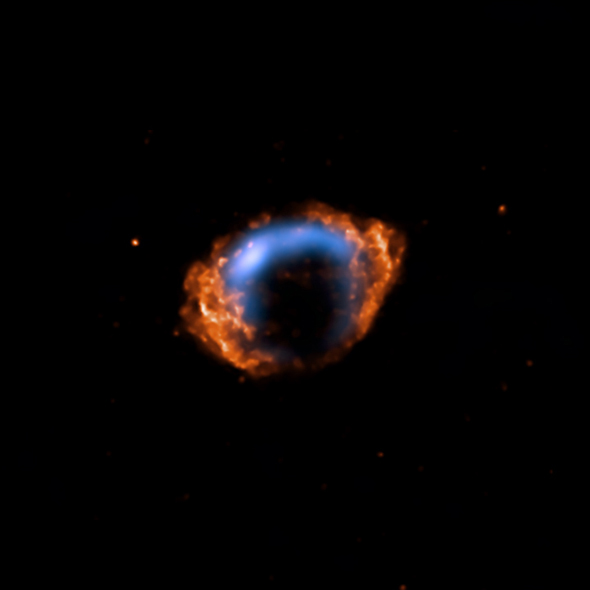Liveblog: NASA Announcement of "Success of Long Galactic Hunt"

NASA scientists at the Chandra X-ray Observatory are holding a teleconference this morning to announce "the discovery of an object in our Galaxy astronomers have been hunting for more than 50 years."
The press release announcing the teleconference generated considerable speculation, despite the efforts of some astronomers, so we're going to bring you live coverage of the announcement starting at 10 AM PST/1 PM Eastern.
We think it'll be interesting, but if it isn't, you'll be the first to know the news is boring.
There's a stream of the audio available, but I'll be on the phone, so if you've got any burning questions you want asked, Tweet @alexismadrigal, AIM: gatobarb, or post a comment.
I'll be updating the post as the conference happens, so remember to hit the old refresh button.
9:57 AM: Headset on. Excellent classical music on the hold line. (Vivaldi, maybe?)
10:03: NASA press release goes live, spoiling the fun. Scientists using NASA's Chandra X-ray Observatory have discovered the Milky Way's most recent supernova, which exploded a mere 140 years ago, a few years after the Civil War.
It's not exactly the discovery of extraterrestrials our readers were hoping for, but it's a significant finding.
10:05: Still on hold. But news: Previously, the latest known supernova occurred in 1680, right around the time Newton published his Principia. A discovery like this was long sought-after and lends support to astronomers rough estimate that three supernovae should explode in our galaxy each century. Scientists calculated the rough age of the supernova by tracking the expansion of its remains from 1985 until new observations were made last year. The remains, as you can see in the picture, had expanded 16 percent.
10:08: Call starts. Two discoverers will be on the line: Stephen Reynolds of NC State and David Green, University of Cambridge. Also, a 3rd party commentator: Bob Kirshner. Reynolds says, "The discovery addresses a lack of recent supernova in our galaxy."
10:16: Reynolds continuing: Supernova located approximately 26,000 light years away from here. Shockwave moving 5% of the speed of light, the fastest ever observed. This supernova exhibits special kind of x-ray activity, one of only 4 supernovae with these x-rays, which are incredibly high-energy, far beyond anything that even the Large Hadron Collider will create.
10:18: Supernovae are incredibly energetic and often visible across the universe, but this one, known as G1.9+0.3, was obscured by the cosmic dust near the center of the galaxy. The scientists said the dust made the explosion a trillion times fainter in optical light than an unobscured explosion.
Green said that this is a very interesting remnant. It's the youngest and smallest and has the highest expansion speed and highest electron energy. "We're confident it will contnue to find interesting information about supernova, supernovae remnants."
10:25: Kirshner gets on the line to provide context, says interesting things: Why are we interested in this? Self-interest. Supernovae make the chemical elements through real alchemy. The calcium in our bones and iron in our blood came from supernovae that exploded. So we're all star dust and it seems reasonable to want to know how elements get formed when stars explode," he said.
Unlike older supernova remnants: "For young objects like this one, you're getting to see the rock that made the splash, not the wave that's going out into the pond."
"This is a stellar death and the corpse is still warm," he concluded.
10:30: Young sounding guy gets on the Q&A line and asks, ""Does this discovery have the potential to get the moon crickets shipped off Earth?" WTF? say the scientists in nicer, longer words. Anyone know what that was about?
10:36: Commenter answers: "'Moon Crickets' and 'Swoogies' (ED: which the questioner also said) are racial slurs." Yikes: how'd that guy get the dial-in number?) The scientists are discussing the difficulty of finding supernovae in the galactic haystack. Also, added more NASA pictures after the jump.
http://www.wired.com

